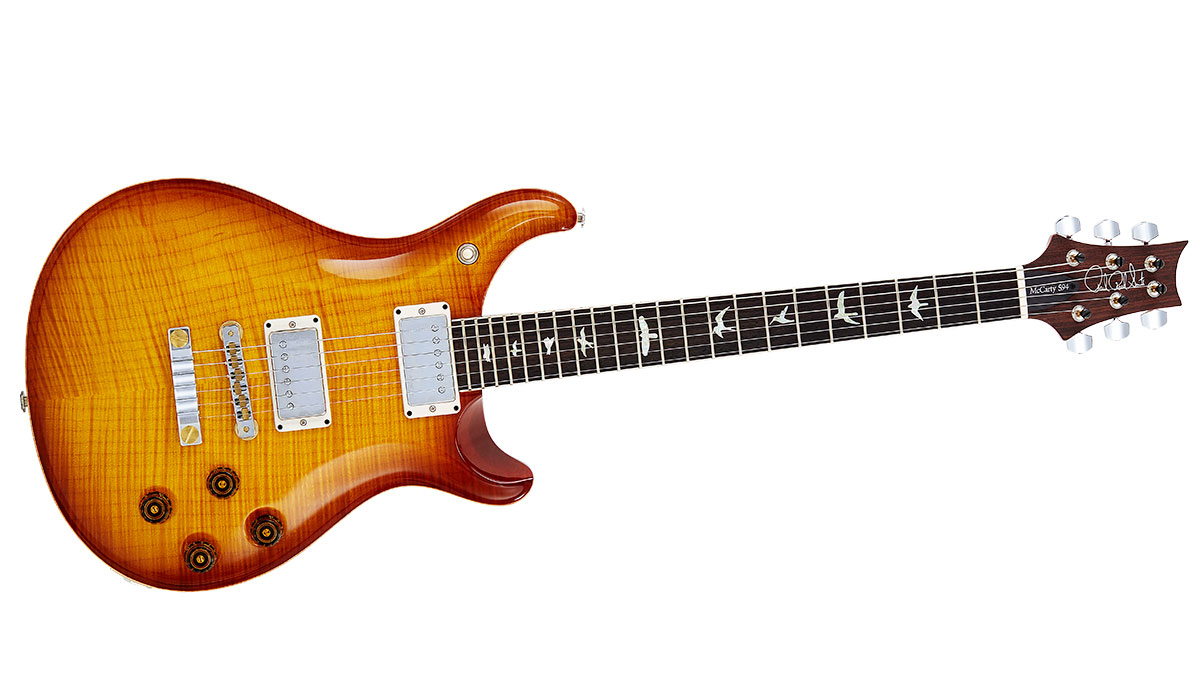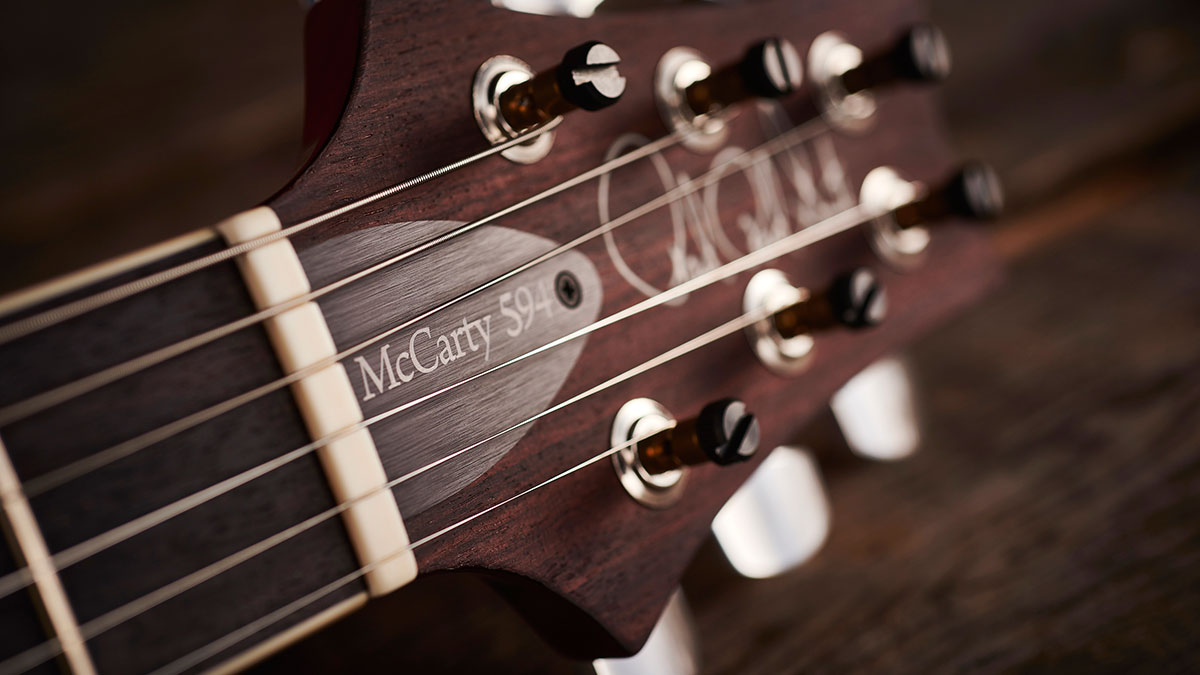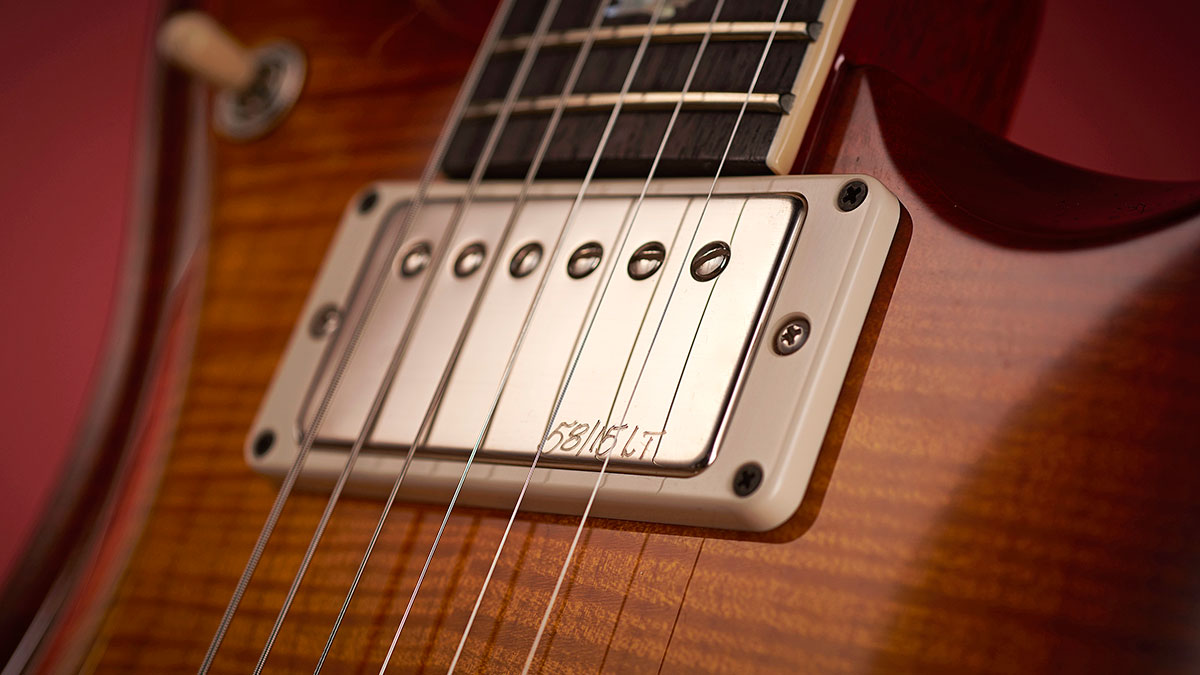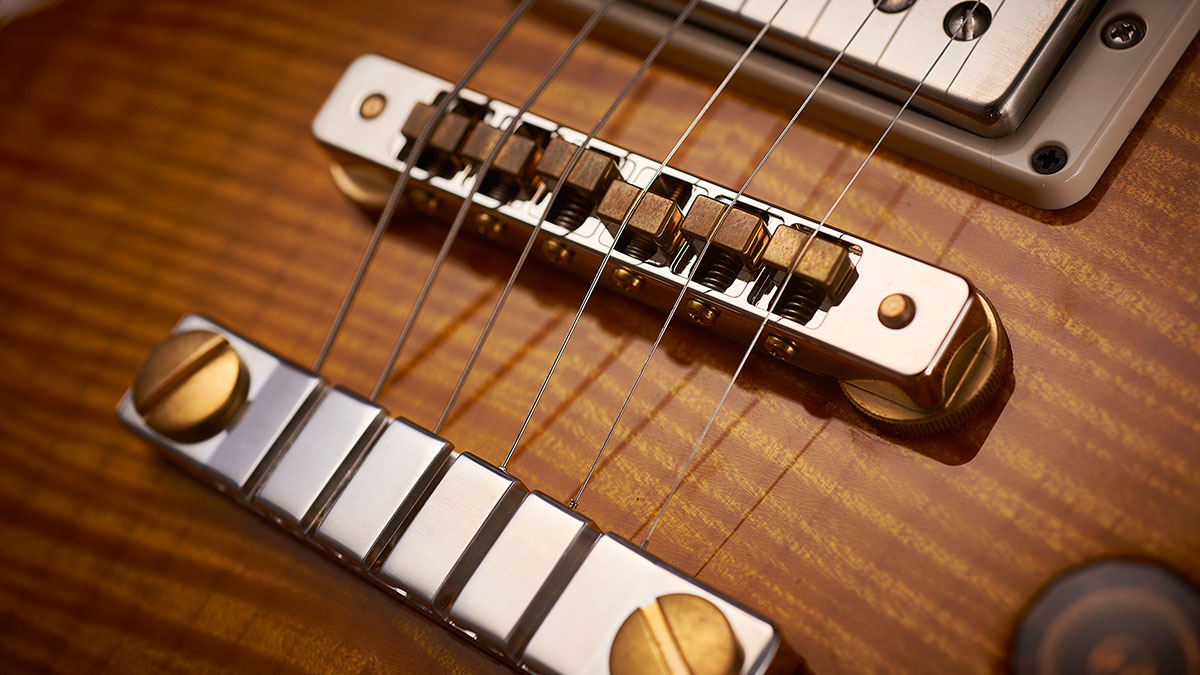MusicRadar Verdict
This is simply one of the most highly-tuned instruments money can buy.
Pros
- +
Four-control classic layout and shoulder-placed toggle switch; superb build; oh-so-classic vintage single-cut tones.
Cons
- -
Never cheap, but then neither is what we see, feel or hear!
MusicRadar's got your back

PRS McCarty 594

PRS McCarty 594

PRS McCarty 594

PRS McCarty 594
As PRS watchers will know, the McCarty Model - named after Theodore 'Ted' McCarty, Gibson's president during its 1950s to 1960s heyday and, much later, 'mentor' to Paul Reed Smith - originally appeared in the early 1990s and was the company's first attempt at a more vintage-informed guitar.
This latest McCarty electric guitar appeared in February 2016 as the second model of a year-long 'Guitars of the Month' run, made by PRS's elite Private Stock team, to celebrate the 20th Anniversary of the Private Stock programme. Our 594, however, is a new 'core' level production model and around half the price of that earlier, limited model.
It takes its name, primarily, from its scale length of 24.594 inches or, as Paul Reed Smith told us earlier this year, "It's a '59 spec guitar with four knobs."
Smith expands: "In the 50s, Gibson's scale length was 24.594 inches [624.7mm]," not the quoted 24.75-inches and is "three thirty-secondths of an inch longer than our 24.5-inch [622mm] scale," used primarily on PRS's Singlecut models, and 0.4-inch (10.3mm) shorter than PRS's standard 25-inch scale. In reality, there's a visible difference from PRS's standard scale, but here, at just 2.4mm longer than PRS's 24.5-inch scale (about the width of a piece of PRS's fretwire), it's barely noticeable at all.
Vintage Tone
However, the focus of the 594 is not just that scale length but a desire to recreate, as closely as possible, the 'holy grail' of vintage Gibson tone - a 1959 Sunburst, but in a modern double-cut guitar. "A way of getting someone who grew up in that world to be very, very happy," says Smith today. "Some vintage guitars stay in tune, some don't. This is designed to play and stay in tune."
There's plenty more up the 594's sleeve to differentiate it from the standard McCarty. Firstly, its body is very slightly deeper with a higher mahogany back-to-maple top wood ratio. It means the rim depth is slightly thicker than the McCarty, which itself is slightly thicker than the PRS Custom.
"The seemingly subtle changes have quite a profound effect... dynamic, expressive - it purrs, it roars."
Slight extra depth ( just under a millimetre) is added to the neck - although in width it's the same as the standard Pattern neck profile. The carve is slightly asymmetric, too. "I bought a '53 Les Paul," says Smith, "and it has an asymmetric neck carve - it's subtle, yes, but you can feel it; it's very cool. The 594 is not as pronounced as that," he adds, "but still noticeable."
Like the standard McCarty, we get a bound, dark rosewood fretboard that retains a 10-inch radius, not a 12-inch like Gibson, but here we have old-school (solid) bird inlays. The nut changes from the usual friction-reducing formula to more classic bone, plus the Phase III open-backed tuners are 'tweaked' and add a small screw on the collar of the button post.
"It's the best thing we've done in years: the combination of these pickups and these tuners. We've figured out how to make our tuners sound like old Klusons," says Smith. (PRS
adds that the added set screw pulls the tuner's shaft, gear and worm together - but takes the tuner button out of play - to promote tone transfer from the string directly into the guitar itself).
Instead of the standard McCarty's one-piece wrapover bridge, the two-piece setup here is PRS's version of the fabled Gibson tune-o-matic and stud tailpiece. The almost handmade-looking parts combine various materials: the bridge using chunky brass- looking saddles, the tailpiece, with its top-slot grooves for fast re-stringing, is aluminium with brass posts. Like the tuners, there's little, or no, plating of any kind.
Yet another change comes with the pickups, which are PRS's latest date-series 58/15 humbuckers but with an 'LT' (Low Turns) suffix, which on a meter shows the bridge unit to have a lower DC resistance than the standard McCarty's 58/15, although the neck pickup seems virtually identical.
"The treble and bass pickups are exactly the same pickups," says Smith. "We haven't done that, ever! Normally, we'd change the turns a little [making the treble bridge pickup slightly hotter in terms of output]; this time we didn't."
When PRS introduced its Singlecut in 2000, it featured four controls but laid out in a different diamond shape to Gibson. It meant that, unlike a Gibson, you couldn't move both volumes, or tones, simultaneously with a quick grab of your right hand.
Here, the four-control layout (the first PRS double-cut guitar to use it) changes back to that classic protocol and feels immediately comfortable to any player used to the much-copied Gibson layout. Along with that shoulder-placed toggle switch, it's really all very familiar.
Feel & Sounds
With a late 2015 standard McCarty as reference, the ride on the 594 remains very similar. The lower positions of the neck do feel deeper- in a good way - and the higher positions have a little more girth; less noticeable is that asymmetric shape.
Playing each guitar unplugged, the standard McCarty, with its 25-inch scale, does feel marginally stiffer and there's a little more high-end zing. The 594 just feels a little more buttery-smooth in both its bending feel and its acoustic response.
Plugged in, again, it's subtle perception rather than chalk-and-cheese difference: the 594's sounds, especially the bridge pickup, are slightly less hi-fi clarity, almost as if you've knocked your tone back a little, but not clouded it in the least. Combine that with the oh-so-classic drive and with your eyes shut, you could be playing a single-cut.
Setting up a classic-rock-gained Marshall amp tone, the standard McCarty keeps us enthralled; switch over to the 594 and the seemingly subtle changes have quite a profound effect. It's like auditioning two guitars and - almost without reason - you just choose one over the other, and it's the 594 that gets the most test time.
Full humbucking, or with the partial coil splits engaged, full volume, half volume, tones rolled off - not to mention the shades with both pickups on - there's not a duff sound that we can find. Dynamic, expressive - it purrs, it roars. Not for the first time do we find ourselves cursing Mr Smith and his team for their continual quest for a better tonal experience.
We concluded our previous review of the current standard McCarty with, "The McCarty has just gotten better... and then some." Is the 594 better still? For the vintage-informed player, the answer is yes.
The combination of all the tweaks, not to mention the control layout, certainly moves the 594 closer to that 'holy grail' sound and feel.
Dave Burrluck is one of the world’s most experienced guitar journalists, who started writing back in the '80s for International Musician and Recording World, co-founded The Guitar Magazine and has been the Gear Reviews Editor of Guitarist magazine for the past two decades. Along the way, Dave has been the sole author of The PRS Guitar Book and The Player's Guide to Guitar Maintenance as well as contributing to numerous other books on the electric guitar. Dave is an active gigging and recording musician and still finds time to make, repair and mod guitars, not least for Guitarist’s The Mod Squad.
“Excels at unique modulated timbres, atonal drones and microtonal sequences that reinvent themselves each time you dare to touch the synth”: Soma Laboratories Lyra-4 review
“I used everything I knew about music”: How Green Day exceeded expectations with their most ambitious song
YouTube just added AI tools that makes musicians, library music and video editors redundant










